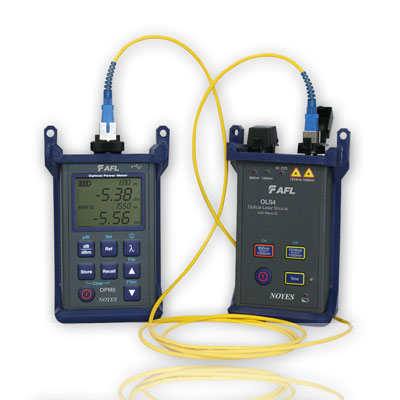Investing in optical fibre testing equipment optimizes network efficiency.
Investing in optical fibre testing equipment optimizes network efficiency.
Blog Article
Introducing the Key Use Optical Fibre Checking for Reliable Information Transmission
In the world of modern-day interaction, optical fiber screening arises as a crucial technique for maximizing information transmission. Comprehending the multifaceted applications of optical fiber screening invites a deeper exploration right into its essential function in shaping the future of information interaction.

Relevance of Optical Fiber Screening
The value of optical fibre screening can not be overstated, as it serves as a crucial part in making certain the dependability and efficiency of information transmission systems. In an age where high-speed communication is extremely important, any type of shortages in fibre optics can bring about considerable information loss and minimized performance. Extensive screening procedures are essential to verify the integrity and efficiency of optical cables.
Evaluating permits the recognition of issues such as micro-bends, macrobends, and splice losses that could hinder signal high quality. Moreover, it supplies understandings right into the overall attenuation and bandwidth capabilities of the fibre, making sure that the network satisfies certain functional standards. Routine testing not only enhances system efficiency yet likewise extends the life expectancy of the facilities by recognizing prospective problems before they escalate right into pricey failings.

Sorts Of Optical Fibre Examinations
Numerous kinds of optical fiber examinations are carried out to ensure the efficiency and reliability of fiber optic networks. These examinations can be categorized right into numerous essential types, each offering a particular objective in evaluating the honesty of the fibre.
First, Optical Time Domain Name Reflectometry (OTDR) is a noticeable test that identifies mistakes, splices, and ports within the fiber. By sending pulses of light and examining the reflected signals, service technicians can pinpoint concerns along the fibre's size.
2nd, insertion loss tests assess the quantity of signal loss when light travel through ports or splices, which is critical for maintaining network effectiveness.
Third, return loss examinations determine the quantity of light reflected back towards the resource, giving understandings into the high quality of links and possible resources of interference.
In addition, continuity tests make sure that the fiber course is full, allowing service technicians to validate that the fiber is undamaged with no breaks. fibre testing equipment.
Last but not least, visual fault locators utilize noticeable light to recognize breaks or extreme he has a good point bends in the fibre, aiding in quick troubleshooting. Collectively, these tests develop a detailed strategy to keeping optimum efficiency in fiber optic networks.

Applications in Network Upkeep
In modern telecoms, efficient network upkeep counts greatly on optical fiber testing to determine and remedy concerns promptly. Regular testing makes certain that the network operates at ideal efficiency degrees, minimizing downtime and boosting user experience.
One of the key applications of optical fibre screening in upkeep is the detection of faults, such as breaks, flexes, or inappropriate connections. Strategies like Optical Time Domain Name Reflectometry (OTDR) enable service technicians to locate these issues properly and examine the quality of the fiber web link. Furthermore, loss screening validates the honesty of the optical path, making sure that signal depletion continues to be within appropriate limits.
Routine upkeep testing also assists in safety nets, recognizing prospective problems prior to they escalate right into significant failings. This positive strategy can save organizations both time and economic resources. Throughout upgrades or expansions, optical fiber testing makes sure that brand-new setups incorporate seamlessly with existing facilities.
Enhancing Information Transmission Dependability
Effective network upkeep via optical fibre screening not just addresses immediate problems yet also plays a substantial role in improving information transmission dependability. By recognizing faults, determining signal loss, and assessing the general problem of fiber optic cables, screening makes certain that potential issues are remedied prior to they intensify into significant interruptions.
Regular optical fiber screening, such as time-domain reflectometry (TDR) and optical time-domain reflectometry (OTDR), permits service technicians to pinpoint the exact areas of breaks, flexes, or adapter issues within the network. This proactive method not only lessens downtime yet additionally maximizes the efficiency of information transmission by making certain that the paths for signals are clear and functioning efficiently.
Moreover, testing aids in verifying adherence to industry standards and specifications, which is vital for preserving the stability of information useful site circulation. By ensuring that each connection meets called for limits for loss and top quality, companies can boost their confidence helpful site in the dependability of their data networks.
Ultimately, investing in thorough optical fiber screening not only enhances data transmission integrity yet likewise supports the long-term functional performance of interaction frameworks.
Future Fads in Fiber Testing
Arising modern technologies are positioned to transform fibre screening, leading the way for enhanced performance and precision in information transmission diagnostics (optical fibre diameter analyser). As the need for faster internet and greater transmission capacity continues to rise, the assimilation of sophisticated tools such as expert system (AI) and machine learning (ML) is readied to transform typical fibre testing techniques. These technologies will certainly allow anticipating maintenance and automated mistake detection, substantially decreasing downtime and boosting network dependability
Additionally, the fostering of Internet of Points (IoT) devices will certainly help with real-time surveillance of fibre networks, enabling instant recognition of performance concerns. This shift in the direction of proactive administration will reduce disruptions and enhance information flow.
Moreover, innovations in optical time-domain reflectometry (OTDR) and brand-new testing requirements will certainly improve the precision of dimensions, ensuring that data honesty is maintained throughout the transmission process. The introduction of 5G innovation additionally necessitates the development of a lot more innovative fibre testing methods to sustain its high-speed needs.
Conclusion
In conclusion, optical fibre screening is essential for keeping effective information transmission within interaction networks. Routine testing not only guarantees compliance with industry standards yet additionally assists in positive maintenance, ultimately adding to the long-term reliability and performance of fiber optic systems.
Report this page